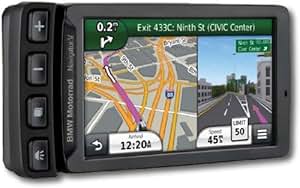For years, GPS navigation has relied on static maps and disembodied voices. You’d stare at a screen, squinting at tiny icons representing your location and destination, occasionally glancing up to make sure you weren’t about to miss your turn. But that’s changing. Augmented Reality (AR) is revolutionizing the way we navigate, transforming the simple act of getting from point A to point B into a more intuitive and engaging experience.
What is AR Navigation, and Why is it Taking Off?

AR navigation overlays digital information onto the real world, typically through your smartphone’s camera. Instead of a flat map, you see a live view of the street ahead with arrows, directions, and other relevant information superimposed directly onto the scene. Imagine seeing a bright arrow projected onto the road, precisely indicating which lane to be in for your upcoming turn, or building names highlighted as you approach them. That’s the power of AR navigation.
Its popularity stems from several factors: improved safety, reduced cognitive load, and a more engaging user experience. Traditional GPS often requires drivers to constantly switch their gaze between the road and their screen, a risky distraction. AR minimizes this, keeping crucial information within your natural field of vision. This reduced cognitive load allows drivers to concentrate more effectively on the road itself, improving safety and reducing the risk of accidents.
How AR Navigation Works: A Deep Dive

The magic behind AR navigation lies in a combination of technologies:
- Computer Vision: Sophisticated algorithms analyze the camera feed, identifying objects like roads, buildings, and signs. This helps the system accurately place digital information in the real-world context.
- GPS and IMU Data: GPS provides location data, while an Inertial Measurement Unit (IMU) tracks the device’s orientation and movement, ensuring accurate placement of AR elements.
- Mapping Data: High-quality 3D maps are crucial. These maps aren’t just simple road networks; they contain detailed information about the environment, allowing for accurate overlay of directions and other information.
- Smartphone Processing Power: The ability of modern smartphones to process vast amounts of data in real time is critical for a smooth and responsive AR navigation experience.
Beyond Simple Directions: The Expanding Capabilities of AR Navigation
AR navigation is far more than just arrows on the road. Features are constantly evolving, offering users a wealth of additional benefits:
- Enhanced Lane Guidance: Real-time lane suggestions are becoming increasingly sophisticated, often indicating specific lanes for turns, exits, or lane merges.
- Pedestrian Navigation: AR navigation isn’t limited to cars. Many apps offer pedestrian-specific AR guidance, using augmented reality to pinpoint the exact route and avoid obstacles.
- Point of Interest (POI) Highlighting: AR can highlight nearby points of interest, such as restaurants, shops, or landmarks, making it easier to find what you need.
- Augmented Reality Parking Assistance: Some systems offer augmented reality parking assistance, overlaying available parking spots onto a live view of the street.
- Integration with other services: AR navigation is increasingly being integrated with other services, such as ride-sharing apps, allowing seamless navigation to and from your destination.
The Future of AR Navigation: What to Expect

The future of AR navigation looks bright. We can anticipate even more sophisticated features, including:
- Improved accuracy and reliability: As computer vision and mapping technologies improve, AR navigation will become even more precise and less prone to errors.
- Wider adoption and integration: Expect greater integration with other devices and services, possibly even through AR glasses or heads-up displays in vehicles.
- Personalized experiences: AR navigation apps will likely offer more personalized features based on individual user preferences and needs.
- More interactive features: We might see more interactive elements within AR navigation, such as gamified challenges or interactive information about the surrounding environment.
Choosing the Right AR Navigation App: Tips and Considerations

With numerous AR navigation apps available, selecting the right one can feel overwhelming. Consider these factors:
- Accuracy and reliability: Look for apps with a proven track record of accurate and reliable navigation.
- Features and functionality: Decide which features are most important to you, such as lane guidance, pedestrian navigation, or POI highlighting.
- Ease of use and interface: Choose an app with a user-friendly interface that is easy to navigate and understand.
- Offline capabilities: Consider whether you need offline navigation functionality, especially for areas with limited or no internet connectivity.
- Privacy policy: Review the app’s privacy policy to ensure your data is protected.
Augmented reality is transforming how we interact with the world around us, and its impact on GPS navigation is only just beginning. As the technology continues to develop, expect even more innovative and life-enhancing features to enhance our daily commutes and journeys.


